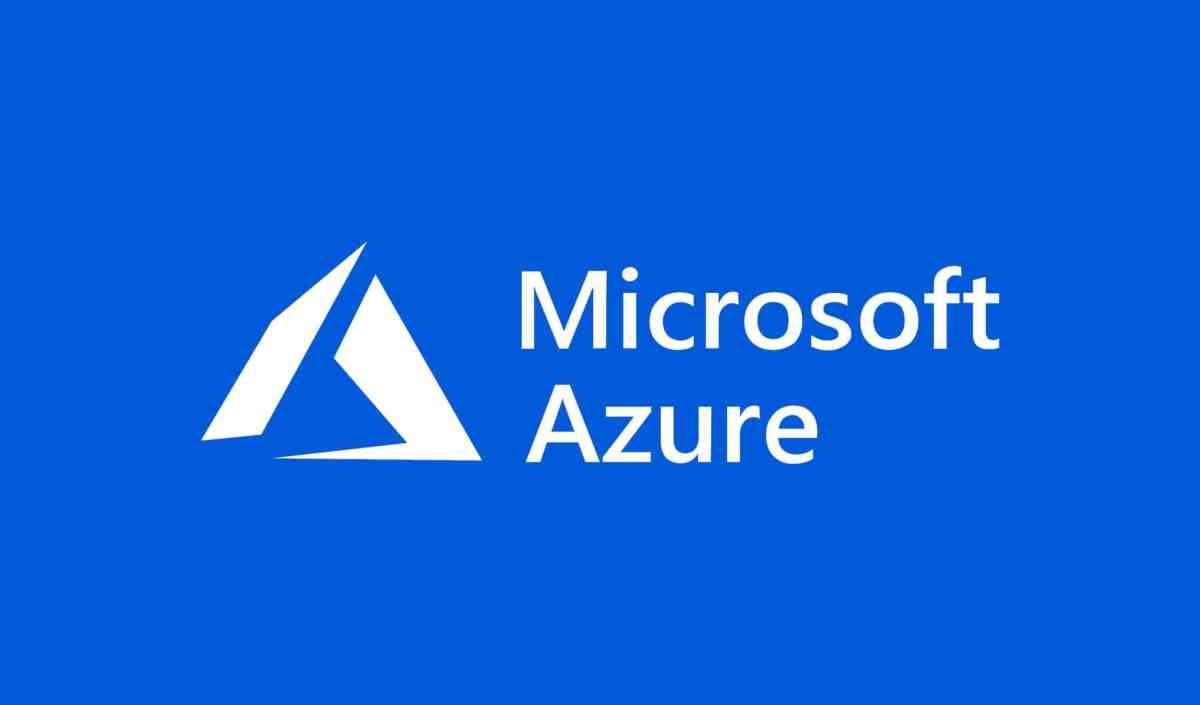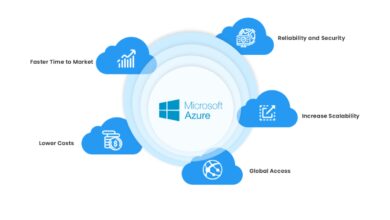msft azure: 7 Powerful Reasons to Choose Microsoft’s Cloud
Cloud computing has transformed how businesses operate, and msft azure stands at the forefront of this revolution. As Microsoft’s cloud platform, it offers unmatched scalability, security, and integration for enterprises worldwide.
What Is msft azure and Why It Matters

Microsoft Azure, commonly referred to as msft azure, is a comprehensive cloud computing platform launched by Microsoft in 2010. It provides over 200 services, including computing, analytics, storage, and networking, all accessible from anywhere in the world. Unlike traditional on-premises infrastructure, msft azure allows organizations to scale resources dynamically based on demand, reducing costs and increasing efficiency.
Origins and Evolution of msft azure
msft azure began as Windows Azure in 2010, primarily focused on application hosting. Over the years, Microsoft rebranded and expanded its offerings, transforming it into a full-fledged cloud ecosystem. By 2014, it was renamed Microsoft Azure to reflect its broader capabilities beyond Windows-based applications.
- 2010: Launched as Windows Azure for app deployment
- 2014: Rebranded to Microsoft Azure with expanded services
- 2020s: Emerged as a leader in hybrid cloud and AI integration
This evolution highlights Microsoft’s commitment to innovation and enterprise-grade solutions. Today, msft azure powers millions of businesses, from startups to Fortune 500 companies.
Core Components of the msft azure Platform
The strength of msft azure lies in its modular architecture. Users can pick and choose services that fit their needs without being locked into a rigid system. Key components include:
- Compute: Virtual machines, containers, serverless functions
- Storage: Blob, file, disk, and data lake storage
- Networking: Virtual networks, load balancers, DNS management
- Security: Identity protection, threat detection, encryption
Each component integrates seamlessly with others, enabling developers to build complex systems with minimal friction. For example, an AI-powered chatbot can run on Azure Functions (serverless compute), store user data in Cosmos DB, and use Azure Cognitive Services for natural language processing—all within the same ecosystem.
“Azure is not just a cloud platform; it’s a complete digital transformation engine.” — Satya Nadella, CEO of Microsoft
Key Advantages of Using msft azure
Organizations choose msft azure for its reliability, innovation, and enterprise alignment. Below are some of the most compelling benefits.
Global Reach and Data Center Infrastructure
One of msft azure’s standout features is its global footprint. With over 60 regions worldwide—including locations in North America, Europe, Asia-Pacific, and Africa—it ensures low-latency access and compliance with local data regulations.
- Azure operates in more countries than any other cloud provider
- Supports data sovereignty with region-specific compliance
- Enables geo-redundant backups for disaster recovery
This global presence makes msft azure ideal for multinational corporations needing consistent performance across borders. For instance, a financial institution in Germany can host data in Frankfurt while serving customers in Japan through Azure’s Tokyo region—all while complying with GDPR and local privacy laws.
Hybrid Cloud Capabilities with Azure Stack
Unlike some competitors, msft azure excels in hybrid environments. Azure Stack allows organizations to run Azure services on-premises, creating a unified cloud experience.
- Extends cloud agility to on-premises data centers
- Enables consistent DevOps practices across environments
- Supports regulated industries like healthcare and defense
This is particularly valuable for industries where data cannot leave physical premises due to compliance requirements. For example, hospitals using electronic health records (EHR) systems can leverage Azure Stack to benefit from cloud automation without violating HIPAA rules.
Integration with Microsoft 365 and Active Directory
For businesses already using Microsoft products, msft azure offers seamless integration. Azure Active Directory (Azure AD) serves as the identity backbone, enabling single sign-on (SSO) across Office 365, Dynamics 365, and custom applications.
- Centralized user management and access control
- Multi-factor authentication (MFA) for enhanced security
- Conditional access policies based on device, location, or risk level
This tight integration reduces administrative overhead and strengthens security posture. A company using Teams, SharePoint, and Exchange Online can manage all user identities and permissions from one dashboard in Azure AD, minimizing the risk of unauthorized access.
msft azure vs. Competitors: A Comparative Analysis
While Amazon Web Services (AWS) and Google Cloud Platform (GCP) dominate headlines, msft azure holds its own—especially in enterprise markets. Let’s compare key aspects.
Market Share and Enterprise Adoption
According to Synergy Research Group (2023), AWS leads with ~32% market share, followed by Microsoft Azure at ~23%, and GCP at ~10%. However, Azure leads in enterprise adoption due to its deep integration with existing Microsoft software.
- Azure is the preferred choice for organizations using Windows Server and SQL Server
- Strong presence in government, education, and healthcare sectors
- Preferred vendor status in many enterprise licensing agreements
This entrenched position gives msft azure a competitive edge in legacy environments transitioning to the cloud. For example, a bank running thousands of Windows-based servers can migrate incrementally to Azure Virtual Machines without rewriting applications.
Service Breadth and Specialized Offerings
While AWS offers the largest number of services, msft azure matches or exceeds it in specialized areas such as AI, machine learning, and IoT.
- Azure Cognitive Services provides pre-built AI models for vision, speech, and language
- Azure Synapse Analytics combines big data and data warehousing
- Azure IoT Hub enables secure device connectivity at scale
Moreover, Azure’s AI tools integrate natively with Power BI and Dynamics 365, making them attractive for business intelligence use cases. A retail chain can use Azure Machine Learning to forecast inventory needs and visualize trends in Power BI—all within the same ecosystem.
Pricing Models and Cost Management Tools
Cloud costs can spiral out of control without proper governance. msft azure addresses this with flexible pricing and robust cost management tools.
- Pay-as-you-go, reserved instances, and spot pricing options
- Azure Cost Management + Billing for real-time tracking
- Advisor recommendations for optimizing spending
Compared to AWS, Azure often offers better pricing for Windows-based workloads due to licensing bundling. Additionally, Azure Hybrid Benefit allows customers to use existing on-premises licenses for virtual machines in the cloud, potentially saving up to 40% on costs.
Security and Compliance in msft azure
In an era of rising cyber threats, security is non-negotiable. msft azure provides a multi-layered defense strategy that protects data at rest, in transit, and during processing.
Built-in Security Features and Threat Protection
Azure Security Center (now part of Microsoft Defender for Cloud) offers unified security management and advanced threat protection.
- Continuous assessment of resource vulnerabilities
- Real-time detection of suspicious activities
- Automated remediation of common misconfigurations
For example, if a virtual machine is exposed to the public internet without a firewall, Azure will flag it and suggest corrective actions. This proactive approach helps prevent breaches before they occur.
Compliance Standards and Certifications
msft azure complies with over 140 international and industry-specific standards, including:
- GDPR (General Data Protection Regulation)
- ISO/IEC 27001, 27017, 27018
- HIPAA for healthcare data
- PCI DSS for payment processing
- SOX for financial reporting
This extensive compliance portfolio makes msft azure suitable for highly regulated industries. A pharmaceutical company conducting clinical trials can store sensitive patient data in Azure with confidence, knowing it meets strict regulatory requirements.
Zero Trust Architecture and Identity Governance
msft azure embraces the Zero Trust security model—“never trust, always verify.” This principle underpins its identity and access management framework.
- Conditional Access policies enforce device compliance before granting access
- Privileged Identity Management (PIM) limits standing admin rights
- Identity Protection uses AI to detect risky sign-ins
For instance, if an employee attempts to log in from an unfamiliar country, Azure AD may require additional verification steps or block access entirely. This dynamic risk assessment enhances security without sacrificing usability.
Innovation and Emerging Technologies on msft azure
Microsoft invests heavily in R&D, ensuring that msft azure remains at the cutting edge of technology. From artificial intelligence to quantum computing, Azure is a launchpad for innovation.
AI and Machine Learning with Azure Cognitive Services
Azure offers one of the most accessible AI platforms in the industry. Developers can integrate intelligent capabilities into applications without deep expertise in data science.
- Computer Vision API analyzes images for objects, faces, and text
- Text Analytics detects sentiment, key phrases, and language
- Speech Services enable voice-to-text and text-to-speech conversion
These APIs are used by companies like BMW and Starbucks to enhance customer experiences. For example, a mobile banking app can use facial recognition (via Azure Face API) for secure login, improving both security and convenience.
Internet of Things (IoT) and Edge Computing
msft azure supports massive IoT deployments through Azure IoT Hub and Azure IoT Edge.
- IoT Hub manages millions of connected devices securely
- IoT Edge runs AI models directly on edge devices
- Time Series Insights enables real-time analytics on sensor data
Manufacturers use these tools for predictive maintenance. Sensors on factory machines send data to Azure, where machine learning models predict failures before they happen, reducing downtime and maintenance costs.
Quantum Computing with Azure Quantum
While still in early stages, Azure Quantum represents Microsoft’s long-term vision for next-generation computing.
- Provides access to quantum hardware from partners like IonQ and Quantinuum
- Offers Q# programming language for quantum algorithm development
- Enables research in cryptography, materials science, and optimization
Though not yet mainstream, Azure Quantum allows academic institutions and tech firms to experiment with quantum algorithms. For example, a logistics company could explore quantum solutions for optimizing delivery routes across thousands of locations.
Real-World Use Cases of msft azure
Theoretical benefits are compelling, but real-world applications demonstrate msft azure’s true value. Here are three notable examples.
Healthcare: Philips Uses Azure for Medical Imaging
Philips, a global leader in health technology, leverages msft azure to process and analyze medical imaging data.
- Stores and shares MRI and CT scans securely in Azure Blob Storage
- Uses Azure AI to assist radiologists in detecting anomalies
- Enables remote diagnostics through cloud-based collaboration
This integration improves diagnostic accuracy and speeds up treatment decisions, ultimately saving lives.
Retail: ASOS Migrates to msft azure for Scalability
ASOS, the UK-based fashion retailer, moved its e-commerce platform to msft azure to handle traffic spikes during sales events.
- Uses Azure Kubernetes Service (AKS) for container orchestration
- Leverages Azure CDN for fast image delivery worldwide
- Implements auto-scaling to manage Black Friday loads
As a result, ASOS achieved 99.99% uptime during peak seasons and reduced page load times by 30%, enhancing customer satisfaction.
Government: UK Ministry of Defence Adopts msft azure
The UK MoD selected msft azure as part of its Digital Backbone initiative to modernize military communications.
- Uses Azure Government for secure, classified workloads
- Deploys AI for battlefield data analysis
- Integrates with Microsoft Teams for secure collaboration
This transformation enables faster decision-making in critical operations while maintaining the highest security standards.
Getting Started with msft azure: A Practical Guide
Whether you’re a developer, IT administrator, or business leader, starting with msft azure is straightforward. Follow these steps to begin your cloud journey.
Creating an Azure Account and Subscription
The first step is signing up for an Azure account. Microsoft offers a free tier with $200 in credits for 30 days and access to over 25 always-free services.
- Visit azure.microsoft.com and click “Start free”
- Provide basic information and payment method (no charge until free tier ends)
- Choose a subscription type: Free, Pay-As-You-Go, or Enterprise
Once registered, you gain access to the Azure portal—a web-based dashboard for managing all resources.
Navigating the Azure Portal and Key Services
The Azure portal is intuitive but feature-rich. Key areas include:
- Dashboard: Customizable home screen for monitoring resources
- Resource Groups: Logical containers for organizing related services
- Marketplace: Catalog of pre-built solutions and third-party apps
- Monitor: Tools for tracking performance and logs
New users should explore services like Azure App Service (for web apps), Azure Functions (serverless), and Azure SQL Database to understand core capabilities.
Best Practices for Cost Optimization and Governance
To avoid unexpected bills, implement cost controls early.
- Use Azure Budgets to set spending limits
- Tag resources by department, project, or environment for tracking
- Enable auto-shutdown for non-production VMs
- Leverage reserved instances for predictable workloads
Additionally, establish governance policies using Azure Policy and Azure Blueprints to enforce organizational standards across subscriptions.
Future Trends Shaping msft azure
The cloud landscape is evolving rapidly, and msft azure is positioning itself for the next decade of digital transformation.
AI-Driven Automation and Copilot Integration
Microsoft is embedding AI across its product suite through GitHub Copilot and Azure AI Studio.
- Copilot for Azure helps write infrastructure-as-code (IaC) templates
- AI Studio enables developers to build, test, and deploy custom models
- Automated workflows reduce manual intervention in operations
This shift toward AI-assisted development accelerates innovation and reduces human error in cloud deployments.
Sustainability and Green Cloud Initiatives
Microsoft has committed to being carbon negative by 2030. msft azure plays a central role in this mission.
- Data centers powered by renewable energy sources
- Efficient cooling technologies reduce power usage
- Azure Sustainability Calculator helps estimate carbon footprint
Organizations choosing msft azure contribute to environmental sustainability while meeting ESG goals.
Expansion of Multi-Cloud and Interoperability
Recognizing that no single cloud fits all needs, Microsoft is enhancing interoperability.
- Azure Arc enables management of resources across AWS, GCP, and on-premises
- Open-source tools like Kubernetes and Terraform are fully supported
- Partnerships with Red Hat and SUSE strengthen Linux compatibility
This openness ensures that msft azure remains a flexible choice in heterogeneous IT environments.
What is msft azure?
msft azure is Microsoft’s cloud computing platform that provides a wide range of services including virtual machines, storage, databases, AI, and networking. It enables businesses to build, deploy, and manage applications at scale.
How does msft azure compare to AWS?
While AWS leads in market share, msft azure excels in enterprise integration, hybrid cloud capabilities, and Microsoft product synergy. Azure is often preferred by organizations already using Windows and Office ecosystems.
Is msft azure secure?
Yes, msft azure offers robust security features including encryption, threat detection, identity management, and compliance with over 140 standards such as GDPR and HIPAA.
Can I use msft azure for free?
Yes, Microsoft offers a free account with $200 in credits for 30 days and access to numerous always-free services like Azure Functions and Blob Storage.
What industries benefit most from msft azure?
Industries such as healthcare, finance, government, retail, and manufacturing benefit significantly from msft azure due to its compliance, scalability, and AI capabilities.
msft azure has evolved from a simple app hosting platform into a powerful engine for digital transformation. Its global reach, hybrid flexibility, security depth, and innovation in AI and IoT make it a top choice for modern enterprises. Whether you’re migrating legacy systems, building new applications, or exploring cutting-edge technologies, msft azure provides the tools and infrastructure to succeed. As cloud adoption accelerates, Microsoft’s commitment to sustainability, interoperability, and AI-driven automation ensures that msft azure will remain a leader in the years ahead.
Further Reading:









